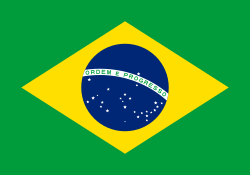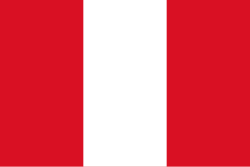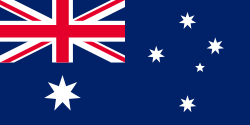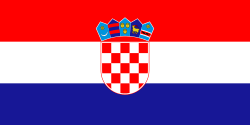Claro Open Colombia 2013 – mužská čtyřhra
| Claro Open Colombia 2013 | ||||
|---|---|---|---|---|
| Vítězové | ||||
| Finalisté | ||||
| Výsledek | 7–6(7–4), 7–6(7–3) | |||
| Soutěže | ||||
| mužská dvouhra • mužská čtyřhra | ||||
| ||||
Do soutěže mužské čtyřhry na tenisovém turnaji Claro Open Colombia 2013 nastoupilo šestnáct dvojic. Antukový turnaj v kolumbijské metropoli Bogótě představoval premiérový ročník
Deblový titul si připsala čtvrtá nasazená dvojice Indů Purav Raja a Divij Sharan, když ve finále porazila francouzsko-nizozemské turnajové dvojky Édouard Roger-Vasselin a Igor Sijsling. O titulu rozhodly zkrácené hry obou setů, které lépe zvládl indický pár.
Raja se Sharanem proměnili premiérovou finálovou účast na okruhu ATP Tour v zisk titulu.
Nasazení párů
 Juan Sebastián Cabal /
Juan Sebastián Cabal /  Robert Farah (semifinále)
Robert Farah (semifinále) Édouard Roger-Vasselin /
Édouard Roger-Vasselin /  Igor Sijsling (finále)
Igor Sijsling (finále) Marcelo Demoliner /
Marcelo Demoliner /  André Sá (1. kolo)
André Sá (1. kolo) Purav Raja /
Purav Raja /  Divij Sharan (vítězové)
Divij Sharan (vítězové)
Pavouk
| Legenda | ||
|
|
|
| První kolo | Čtvrtfinále | Semifinále | Finále | ||||||||||||||||||||||
| 1 | | 2 | 79 | [13] | |||||||||||||||||||||
| | 6 | 67 | [11] | 1 | | 4 | 77 | [10] | |||||||||||||||||
| Alt | | 6 | 77 | Alt | | 6 | 63 | [8] | |||||||||||||||||
| | 3 | 64 | 1 | | 2 | 3 | |||||||||||||||||||
| 4 | | 6 | 6 | 4 | | 6 | 6 | ||||||||||||||||||
| WC | | 2 | 2 | 4 | | 3 | 6 | [10] | |||||||||||||||||
| | 1 | 2 | | 6 | 3 | [6] | |||||||||||||||||||
| | 6 | 6 | 4 | | 77 | 77 | |||||||||||||||||||
| WC | | 4 | 64 | 2 | | 64 | 63 | ||||||||||||||||||
| | 6 | 77 | | 66 | 63 | ||||||||||||||||||||
| | 6 | 6 | | 78 | 77 | ||||||||||||||||||||
| 3 | | 4 | 3 | | 1 | 63 | |||||||||||||||||||
| | 6 | 6 | 2 | | 6 | 77 | |||||||||||||||||||
| | 1 | 2 | | 60 | 6 | [2] | |||||||||||||||||||
| | 67 | 1 | 2 | | 7 | 3 | [10] | ||||||||||||||||||
| 2 | | 79 | 6 | ||||||||||||||||||||||
Odkazy
Reference
V tomto článku byl použit překlad textu z článku 2013 Claro Open Colombia – Doubles na anglické Wikipedii.
Externí odkazy
Média použitá na této stránce
Flag of Canada introduced in 1965, using Pantone colors. This design replaced the Canadian Red Ensign design.
The flag of the Dominican Republic has a centered white cross that extends to the edges. This emblem is similar to the flag design and shows a bible, a cross of gold and 6 Dominican flags. There are branches of olive and palm around the shield and above on the ribbon is the motto "Dios,Patria!, Libertad" ("God, Country, Freedom") and to amiable freedom. The blue is said to stand for liberty, red for the fire and blood of the independence struggle and the white cross symbolized that God has not forgotten his people. "Republica Dominicana". The Dominican flag was designed by Juan Pablo Duarte, father of the national Independence of Dominican Republic. The first dominican flag was sewn by a young lady named Concepción Bona, who lived across the street of El Baluarte, monument where the patriots gathered to fight for the independence, the night of February 27th, 1844. Concepción Bona was helped by her first cousin María de Jesús Pina.
The flag of the Dominican Republic has a centered white cross that extends to the edges. This emblem is similar to the flag design and shows a bible, a cross of gold and 6 Dominican flags. There are branches of olive and palm around the shield and above on the ribbon is the motto "Dios,Patria!, Libertad" ("God, Country, Freedom") and to amiable freedom. The blue is said to stand for liberty, red for the fire and blood of the independence struggle and the white cross symbolized that God has not forgotten his people. "Republica Dominicana". The Dominican flag was designed by Juan Pablo Duarte, father of the national Independence of Dominican Republic. The first dominican flag was sewn by a young lady named Concepción Bona, who lived across the street of El Baluarte, monument where the patriots gathered to fight for the independence, the night of February 27th, 1844. Concepción Bona was helped by her first cousin María de Jesús Pina.
Chinese Taipei Olympic Flag. According to the official website of Chinese Taipei Olympic Committee, Blue Sky(circle) & White Sun(triangles) above the Olympic rings is neither the National Emblem of the Republic of China, nor the Party Emblem of Kuomintang (KMT), but a design in between, where the triangles do not extend to the edge of the blue circle, as registered at International Olympic Committee in 1981 and digitally rendered in 2013. Besides, the blue outline of the five-petaled plum blossom is broader than the red one. Moreover, the CMYK code of the blue one and the Blue Sky & White Sun is "C100-M100-Y0-K0", and different from the Olympic rings (C100-M25-Y0-K0). Note that it's the only version recognized by IOC.
Chinese Taipei Olympic Flag. According to the official website of Chinese Taipei Olympic Committee, Blue Sky(circle) & White Sun(triangles) above the Olympic rings is neither the National Emblem of the Republic of China, nor the Party Emblem of Kuomintang (KMT), but a design in between, where the triangles do not extend to the edge of the blue circle, as registered at International Olympic Committee in 1981 and digitally rendered in 2013. Besides, the blue outline of the five-petaled plum blossom is broader than the red one. Moreover, the CMYK code of the blue one and the Blue Sky & White Sun is "C100-M100-Y0-K0", and different from the Olympic rings (C100-M25-Y0-K0). Note that it's the only version recognized by IOC.
Flag of Australia, when congruence with this colour chart is required (i.e. when a "less bright" version is needed).
See Flag of Australia.svg for main file information.Při zobrazení tohoto souboru lze snadno přidat orámování


















